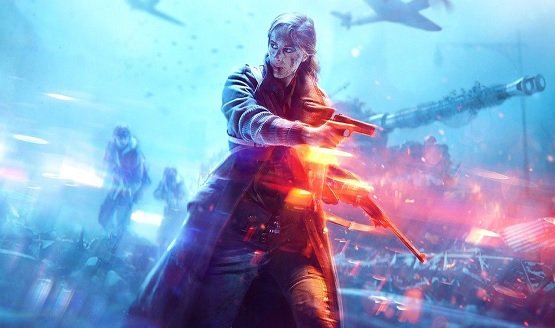Battlefield 5, the latest installment in the iconic military first-person shooter franchise, has ignited an intense debate surrounding its portrayal of female characters. This discussion transcends the gaming community, entering broader cultural narratives regarding representation, historical accuracy, and gender in media. This article aims to dissect the multifaceted controversy, exploring historical context, audience reception, and implications for future representations of gender in gaming.
To comprehend the magnitude of the debate surrounding Battlefield 5’s female characters, it is crucial to delve into the historical context that informs contemporary perspectives on gender representation in media. The Battlefield franchise is renowned for its emphasis on authenticity and realism, often set against the backdrop of significant military conflicts. The decision to include female soldiers in a setting inspired by World War II sparked outrage among segments of the gaming community, invoking arguments steeped in notions of historical fidelity.
At the heart of this contention lies a misconception of historical accuracy, frequently posited by detractors who argue that the presence of female soldiers in a World War II setting deviates from documented reality. It is imperative to acknowledge that while women’s roles in the Second World War were often marginalized in historical narratives, they were undeniably present. Women served in numerous capacities, from support roles to active combat positions in various national armies. For instance, the Soviet Union deployed all-female combat units, such as the Night Witches, an elite group of female pilots who played a crucial role in the war effort. Thus, the argument for historical accuracy must navigate the blurred lines between representation and oversight in recounting history.
Moreover, the discourse surrounding representation in media is not new; it is a reflection of larger societal changes. The inclusion of women in gaming is indicative of the industry’s gradual shift towards more diverse narratives. Historically, video games have been largely male-dominated spaces, often featuring hyper-masculine representations of characters. However, the demand for inclusivity has burgeoned over the years, challenging the status quo and advocating for a broader spectrum of representation. Gamers today are more conscious of issues related to gender, race, and sexuality, leading to increased critique regarding the representation they encounter. Battlefield 5 thus becomes a microcosm of this ongoing dialogue about the role of women in media and the necessity of inclusive storytelling.
The backlash against Battlefield 5 does not solely anchor itself in claims of historical inaccuracy; it also encapsulates deeper anxieties about gender roles and masculinity. The introduction of female characters into traditionally male-centric narratives often elicits discomfort for some audiences, signaling a perceived threat to established gender norms. This reaction underscores the social construct of masculinity, which has long defined the “ideal” soldier as male, brave, and stoic. When faced with representations that subvert these ideals, some individuals react with hostility, fearing a loss of identity within their favored narratives.
Interestingly, this backlash has unintentionally intensified awareness and advocacy for female representation in gaming. The negative reactions to Battlefield 5 have drawn attention to the prevalence of sexism within gaming culture, laying bare the resistance against progressive change. Furthermore, the inclusion of women in gaming is not merely about parity; it is about enriching the narratives that games can offer. Games have the potential to reflect the complexities of human experience. By including women and their stories, developers can access a wealth of narratives that challenge existing tropes and expand the universality of the medium.
The reception of Battlefield 5’s female characters also invites discourse on the idea of ‘artistic license’ within video games. Video games, as a medium, offer a unique interplay between reality and imagination. They are a form of storytelling that can deviate from historical accuracy without undermining the overarching narrative. Contextual frameworks, rather than strict adherence to historical events, should guide the representation of characters. The creative freedom inherent in video game development invites the opportunity for diverse narratives that can educate, challenge perspectives, and promote empathy. Battlefield 5’s decision to incorporate female characters reflects this very freedom—a choice that can lead to a richer, more varied understanding of the human experience during wartime.
As the gaming industry continues to evolve, so too does the call for more inclusive narratives. Developers have the responsibility to delve into the myriad experiences that characterize human conflict. Battlefield 5’s female characters represent just one facet of the larger conversation surrounding diversity in gaming. The challenges evident in the reactions to these characters underline the importance of listening to diverse audiences, acknowledging their varied expectations and desires for representation. This dialogue is vital for shaping the future of gaming, endorsing the notion that stories worth telling are those that encompass the breadth of human experience.
In examining the backlash surrounding Battlefield 5, it becomes evident that the debate is not solely about female characters or historical accuracy; it is a reflection of deeper societal issues regarding gender, representation, and power dynamics. The dialogues initiated by this controversy provide a critical opportunity to engage with these concepts, fostering a more nuanced and inclusive understanding of gender in media. As the gaming industry progresses, it must remain attuned to these issues, recognizing the role it plays in shaping cultural narratives and societal perceptions of gender.
Ultimately, Battlefield 5 serves as a significant case study in the broader discussion of representation in video games. The tensions that arose within the community speak to an urgent need for ongoing conversations about the role of women, non-binary individuals, and diverse voices in shaping contemporary narratives. By embracing diversity, the gaming industry can not only enrich its storytelling but also contribute to a cultural landscape where all individuals feel seen, valued, and understood.





























